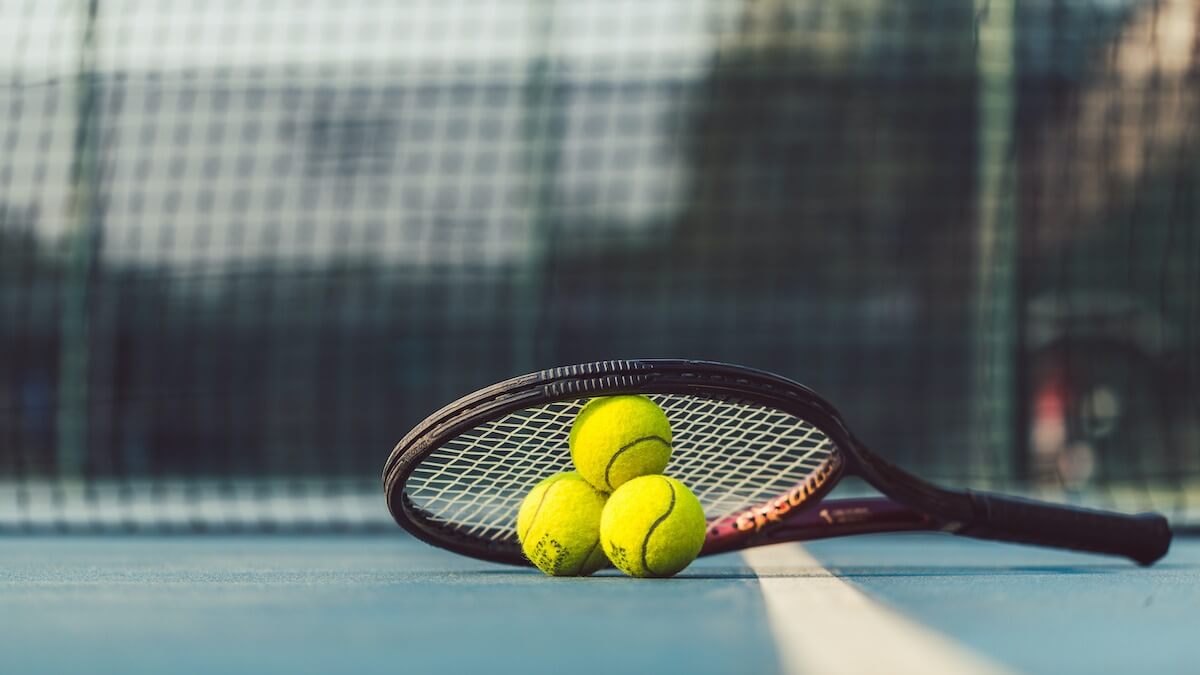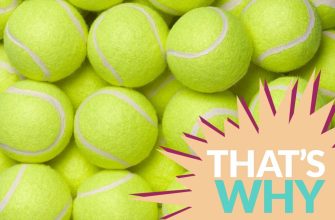Tennis balls, those fuzzy yellow spheres that zoom across the court, are not your average rubber balls. They possess something special – pressurization. But why? What purpose does it serve?
To understand, we must explore tennis ball physics. Pressurization contributes to the ball’s performance. It creates an internal force, allowing it to rebound quickly. This elasticity increases the ball’s speed and power.
The pressurization also affects the racket. When a player strikes the ball, the internal pressure causes the ball to compress slightly. This compression generates energy, which transfers back to the ball when it touches the strings of the racket. This boosts the power and control of shots.
Where did this unique characteristic come from? Pressurized tennis balls began in the 19th century. Originally, natural rubber was the core material. People discovered that by filling them with air or gas, their performance improved.
The Science of Tennis Balls

Did you know there’s an interesting science behind tennis balls? Let’s explore the physics of tennis balls and find out why they’re pressurized!
A tennis ball is made of rubber with a felt layer. It’s also pressurized to a specific level. This air pressure affects the ball’s bounce and playability. When hit, the air inside pushes against the rubber, allowing it to deform and regain shape upon impact.
The pressure also affects the speed and control of shots. A highly pressurized ball is faster and harder to control. A less pressurized ball is slower and easier to maneuver.
Over time, the pressure decreases due to air leakage from the ball’s tiny channels. This causes changes in how the ball behaves. To maintain consistent playing conditions, professional tournaments require the balls to meet certain pressure standards.
So next time you play, remember these little yellow spheres are products of science, designed for performance!
Purpose of Pressurization

Pressurizing tennis balls is a must. It boosts their performance and meets the ITF’s standards for professional play. Let’s explore why:
Improved bounce, enhanced speed, increased durability – these are the three advantages of pressurizing tennis balls.
The bounce? Pressurizing makes it more resilient, for a higher rebound effect when it hits the court or racket. Players get a consistent, predictable bounce, making game play fair.
Plus, the speed increases. A properly pressurized ball helps players make faster shots and serves, creating more excitement and challenge.
And, pressurization increases durability. It keeps the ball’s shape and structure, so it can withstand repeated use without weakening.
These benefits aren’t just for pro players – recreational tennis fans get to enjoy them too.
Maintenance of Pressurized Tennis Balls

Tennis balls, being pressurized, require regular care. Neglecting it can lead to a loss of bounce and performance during play.
To maintain their pressurization, follow this 4-step guide:
- Store in a cool and dry place. Heat or moisture can cause air inside the ball to expand or contract, leading to a pressure decrease. Keep away from direct sunlight or extreme temps.
- Use a pressureless container. This type helps maintain the internal pressure by preventing air exchange with the surroundings. Make sure the lid is sealed.
- Rotate between sessions. To extend life, switch up sets of balls over time. This allows each set to recover shape and increase bounce potential.
- Check firmness before play. Before starting, check the firmness of your tennis balls. A gentle squeeze should show resistance and springiness. If they’re soft, it’s time to replace them.
By following these steps, you can ensure your pressurized tennis balls remain in optimal condition for a long time. Pro Tip: Invest in pressurizer tubes made for tennis balls. These tubes offer extra protection against pressure loss by minimizing air exchange and prolonging the internal pressure.
Alternatives to Pressurized Tennis Balls

Pressurized tennis balls are the preferred choice for players due to their lively bounce and consistent performance. But, there are alternatives! Pressureless balls are made of solid rubber, not needing pressurization. They last longer and are ideal for recreational players.
Gas-filled tennis balls use inert gas instead of air and offer a similar bounce. Low-pressure balls have lower internal pressure than traditional pressurized balls and are great for beginners. Technology is always evolving in the tennis ball industry!
Rafael Nadal once shared a story about needing better pressurized balls during a match – even minor differences in performance can matter to pros.
Frequently Asked Questions
Q: Why are tennis balls pressurized?
A: Tennis balls are pressurized to enhance their performance during gameplay. The pressurization of the balls helps to create a more consistent bounce and allows players to have better control over their shots.
Q: How are tennis balls pressurized?
A: Tennis balls are usually pressurized with a combination of air and gases, such as nitrogen. This pressurization is done during the manufacturing process, where the balls are sealed to retain the pressure until they are opened for use.
Q: What happens when a tennis ball loses its pressure?
A: When a tennis ball loses its pressure, it becomes softer and less bouncy. The loss of pressure can affect the ball’s performance, making it harder to control and reducing the consistency of its bounce.
Q: How long does a pressurized tennis ball last?
A: The lifespan of a pressurized tennis ball varies depending on factors such as the quality of the ball and frequency of use. On average, pressurized tennis balls can last anywhere from a few weeks to a couple of months before they start to lose their pressure and performance.
Q: Can pressurized tennis balls be re-pressurized?
A: No, pressurized tennis balls cannot be re-pressurized once they have lost their pressure. Once a ball’s pressure is lost, it is recommended to replace it with a new one for optimal performance during gameplay.
Q: Are all tennis balls pressurized?
A: No, not all tennis balls are pressurized. There are also non-pressurized tennis balls available in the market. Non-pressurized balls have a solid core and do not offer the same level of bounce and control as their pressurized counterparts.
Conclusion
Tennis balls are pressurized to keep their bounce consistent. This pressure lets them keep their shape and elasticity, for a fair match. It also means the ball bounces predictably. Players can anticipate and react to shots.
Pressurization means injecting gas into the hollow rubber core. This gas creates pressure against the ball’s covering. Without pressure, the ball would be flat and not bounce.
Pressurized balls are durable and last longer. The internal air pressure stops the ball from getting easily dented or deformed when hit. It helps preserve the felt covering too.
Pro Tip: Store pressurized tennis balls in a cool and dry place when not in use. This stops the pressure dropping due to temperature changes. You’ll have consistent performance from your tennis balls for longer.








